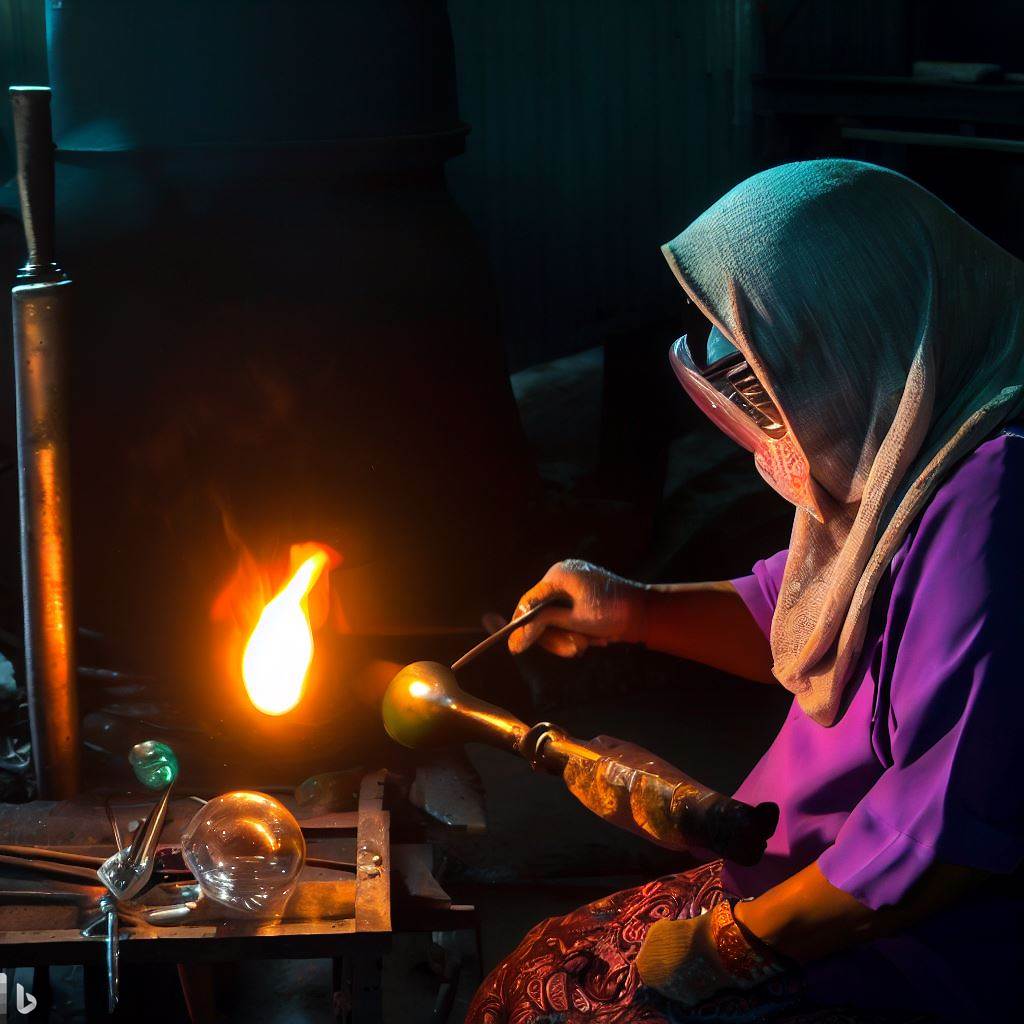Demystifying Glassblowing: Secrets of the Craft Revealed
Observing the fluid forms created through glassblowing, the process seems magical. Yet behind the mesmerizing results lie carefully guarded trade secrets passed down for generations. Core techniques evolved as studio craftspeople jealously protected their proprietary methods in medieval Europe. But today’s glassblowers open the curtain to share insights into their intricate artistry.
Crafting Clear Molten Glass
The pure clarity of fine blown glass comes from recipes perfected over millennia. Silica sand provides the base, but minerals like soda ash and limestone must be added to lower melting temperatures. The right proportions prevent clouding while making glass molten at achievable furnace temperatures.
Early glassmakers kept their crystal-clear formulations under lock and key. Today’s studios also tune recipes towards desired properties like durability, workability, and brilliance through controlled variation in the elemental recipe.
Achieving Brilliant Colors
Dyes and metals introduced in the glassmaking process add striking colors seen in blown glassware. Gold and silver create rubinesque reds and lustrous yellows. Cobalt yields rich blues. Copper produces verdant greens and rubies. Manganese purples and selenium pinkish-reds broaden the palette dramatically.
Skilled color layering and pattern mixing requires masterful coordination. But knowing how to systematically introduce minerals and metals lets glassblowers selectively color clear glass for more brilliant hues. Proprietary combinations create distinctive regional styles.
Creating Durable Crack-Free Creations
After shaping, glass still contains internal stresses from expansion and contraction that can cause fractures and breaks. The secret to preventing cracks lies in slowly cooling newly blown pieces to relax stresses in a process called annealing.
Newly blown glass gets placed inside programmable ovens that lower the temperature incrementally from about 1000°F to room temperature over the course of many hours to days. Deliberate controlled cooling sets the internal structure of glass to eliminate pent-up tension that leads to cracks.
Multiplying Possibilities with Molds
While freeform blowing impresses, molds exponentially increase possible shapes by giving uniform structure. Placing heated glass into pre-carved graphite, steel, or plaster molds forces it to assume intricate designs. Once thickened, detailed glass can be removed from the mold for additional modification.
Italians perfected the complex midi techniques for twisting cane patterns within glass that get revealed through mold shaping. Contemporary mold work adapts 3D scanned or computer-modeled forms for exacting detail. Molds unlock infinite bespoke designs.
Manifesting Murrine Magic
Murrine patterns seen in blown glass mesmerize the eye yet require masterful skill to execute. Skilled murrine work involves creating intricate canes made of colored glass rods fused together in patterns. When sliced into thin discs, these patterned canes get incorporated into blown glass to create kaleidoscopic optical effects within the finished pieces.
Endlessly complex multi-layered canes produce signature looks like Venetian designer Ignazio Iturrusgarai’s geometric patterns. The meticulous canes hold promise of magic revealed through blowing into light.
Making Gravity Into Glass’s Ally
Gravity provides advantages in glassblowing as well as challenges. Skilled manipulation of gravity’s downward pull can create narrow stems, drawn out trailing threads, and elongated vase forms. But uncontrolled drips and sags prove gravity’s destructive power.
Savvy blowing uses gravity as an aid by selectively cooling rigid sections to resist sagging while allowing certain areas to remain hot and loose to encourage controlled thinning and elongation for gorgeous results. Through practice, gravity evolves from foe to friend.
From Alchemy to Artistry
What may have involved opaque mystery and bizarre ritualism for early artisans has become an open practice dependent on know-how, study, and creativity. While secrets certainly remain closely held regarding extraordinary techniques, core methods now spread widely to fuel innovation. Where its practice once demanded secrecy, modern glassblowing thrives through collaboration and mentorship. No magic beyond molten light and human breath could be more wondrous.
